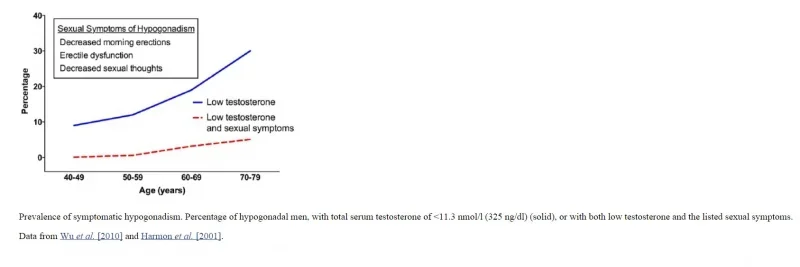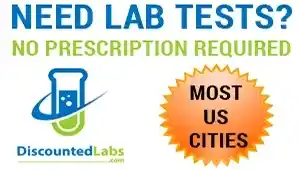Nelson Vergel
Founder, ExcelMale.com
Prevalence estimates of late-onset hypogonadism (or aging related low testosterone) (LOH) vary widely depending on study methods, populations and diagnostic criteria used. The laboratory diagnosis of LOH, including guideline recommendations, has been reviewed elsewhere [Matsumoto, 2003; Wang et al. 2008; Basaria, 2014]. Importantly, the inclusion of symptoms in the diagnosis of LOH helps to separate the pathologic condition of LOH from normal, and expected, age-dependent declines in testosterone (Figure 1). For instance, in the Hypogonadism in Males (HIM) study, 38.7% of men over 45 years met criteria for androgen deficiency, defined as a morning total serum testosterone of <10.4 nmol/l (300 ng/dl) [Mulligan et al. 2006]. In contrast, in the European Male Aging Study (EMAS), using criteria of testosterone <11.1 nmol/l (320 ng/dl) combined with the presence of symptoms, an estimated 2.1% of men aged 40–79 years met these criteria [Wu et al. 2010]. As expected, the prevalence of LOH in EMAS increased with age, from 0.1% for men in their 40s to 5.1% for men in their 70s [Wu et al. 2010]. Using both laboratory and symptoms for diagnosis, the Massachusetts Male Aging Study estimated that 2.4 million US men met criteria for LOH [Araujo et al. 2004].

http://www.ncbi.nlm.nih.gov/pmc/articles/PMC4647137/

http://www.ncbi.nlm.nih.gov/pmc/articles/PMC4647137/











